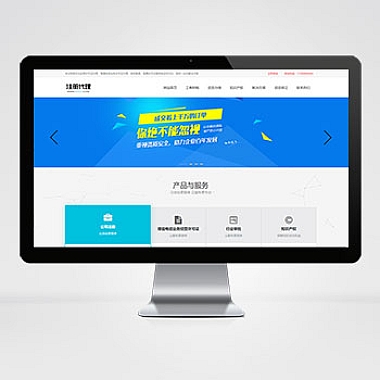Vue3 异步状态管理
在构建现代的前端应用时,异步状态管理是一个常见的需求。Vue3 提供了多种方式来处理异步操作,并确保状态的一致性和可预测性。介绍几种常见的解决方案,帮助你在 Vue3 中优雅地管理异步状态。
开篇解决方案
为了有效地管理异步状态,我们可以使用 Vue3 的组合式 API(Composition API)和 Pinia 或 Vuex 等状态管理库。这些工具可以帮助我们更好地组织代码逻辑,确保状态的变化是可追踪的,并且可以轻松处理复杂的异步操作。
1. 使用 Composition API 和 setup 函数
Vue3 的 Composition API 提供了一种更灵活的方式来组织代码逻辑。通过 setup 函数,我们可以更清晰地分离业务逻辑和组件模板。
1.1 基本的异步请求示例
vue
<div>
<p>Loading...</p>
<p>{{ error }}</p>
<ul>
<li>{{ item.name }}</li>
</ul>
</div>
</p>
import { ref, onMounted } from 'vue';
import axios from 'axios';
export default {
setup() {
const loading = ref(true);
const data = ref([]);
const error = ref(null);
// 模拟异步请求
const fetchData = async () => {
try {
const response = await axios.get('https://api.example.com/data');
data.value = response.data;
} catch (err) {
error.value = err.message;
} finally {
loading.value = false;
}
};
onMounted(() => {
fetchData();
});
return {
loading,
data,
error,
};
},
};
<p>在这个例子中,我们使用了 ref 来定义响应式的变量,并通过 async/await 处理异步请求。onMounted 钩子确保在组件挂载后立即发起请求。
2. 使用 Pinia 进行全局状态管理
当应用变得复杂时,局部的状态管理可能会变得难以维护。Pinia 是一个轻量级的状态管理库,专为 Vue3 设计,适合处理全局状态。
2.1 定义 Pinia Store
我们需要定义一个 Pinia Store 来管理异步状态:
javascript
// store.js
import { defineStore } from 'pinia';
import axios from 'axios';</p>
<p>export const useDataStore = defineStore('data', {
state: () => ({
data: [],
loading: false,
error: null,
}),
actions: {
async fetchData() {
this.loading = true;
try {
const response = await axios.get('https://api.example.com/data');
this.data = response.data;
} catch (err) {
this.error = err.message;
} finally {
this.loading = false;
}
},
},
});
2.2 在组件中使用 Pinia Store
接下来,在组件中使用这个 Store:
vue
<div>
<p>Loading...</p>
<p>{{ error }}</p>
<ul>
<li>{{ item.name }}</li>
</ul>
</div>
</p>
import { useDataStore } from './store';
import { storeToRefs } from 'pinia';
export default {
setup() {
const dataStore = useDataStore();
const { data, loading, error } = storeToRefs(dataStore);
dataStore.fetchData();
return {
data,
loading,
error,
};
},
};
<p>通过这种方式,我们可以在多个组件之间共享状态,并且所有的状态变化都是集中管理的。
3. 使用 Vuex 进行全局状态管理
虽然 Pinia 是专门为 Vue3 设计的,但如果你已经在使用 Vuex,它仍然是一个强大的选择。Vuex 的核心概念包括 State、Getters、Mutations 和 Actions。
3.1 定义 Vuex Store
javascript
// store.js
import { createStore } from 'vuex';
import axios from 'axios';</p>
<p>export default createStore({
state: {
data: [],
loading: false,
error: null,
},
mutations: {
setLoading(state, status) {
state.loading = status;
},
setData(state, payload) {
state.data = payload;
},
setError(state, message) {
state.error = message;
},
},
actions: {
async fetchData({ commit }) {
commit('setLoading', true);
try {
const response = await axios.get('https://api.example.com/data');
commit('setData', response.data);
} catch (err) {
commit('setError', err.message);
} finally {
commit('setLoading', false);
}
},
},
});
3.2 在组件中使用 Vuex Store
vue
<div>
<p>Loading...</p>
<p>{{ error }}</p>
<ul>
<li>{{ item.name }}</li>
</ul>
</div>
</p>
import { mapState, mapActions } from 'vuex';
export default {
computed: {
...mapState(['data', 'loading', 'error']),
},
methods: {
...mapActions(['fetchData']),
},
created() {
this.fetchData();
},
};
<p>通过 Vuex,我们可以实现更加模块化的状态管理,并且可以利用它的插件系统扩展功能。
在 Vue3 中,无论是使用 Composition API 还是 Pinia 或 Vuex,都可以有效地管理异步状态。根据项目的规模和复杂度,你可以选择最适合的方案。对于小型项目,直接在组件内管理状态可能是最简单的方式;而对于大型项目,使用 Pinia 或 Vuex 可以更好地组织和维护全局状态。











